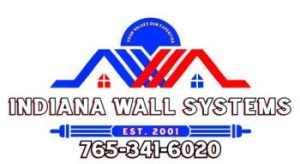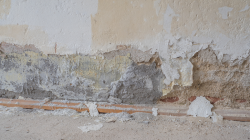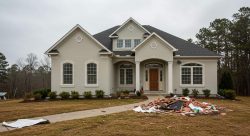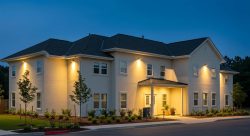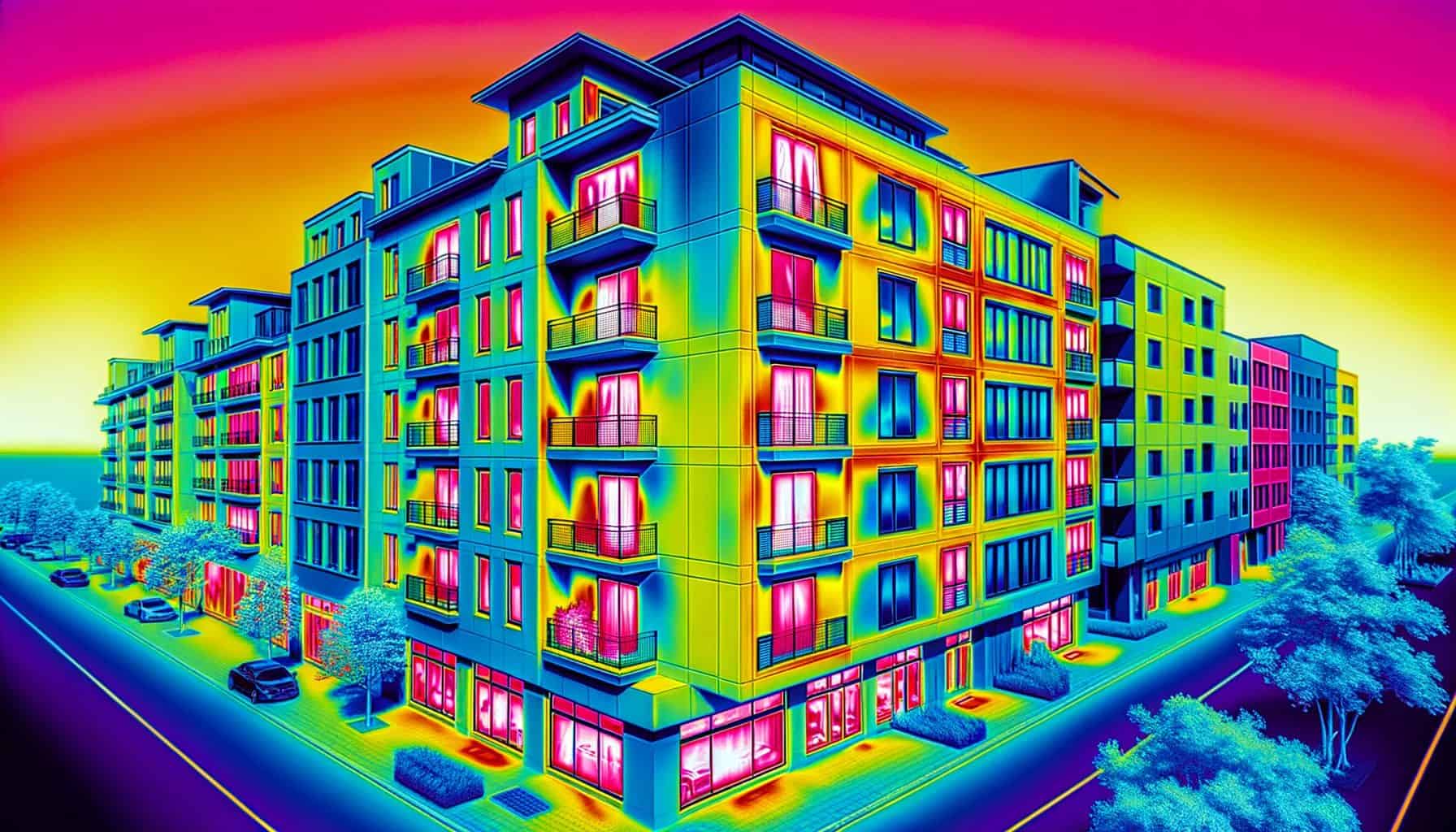Unlocking EIFS Compliance: Your Guide to Peace of Mind
Worried your EIFS isn’t up to legal standards? You want to be sure your building’s secure. This article will help you spot if your EIFS conforms. Don’t delay – find out now! Is your EIFS code-compliant? Read on to find out!
Building Code Requirements for EIFS
Building codes dictate the must-haves for EIFS installations. Meeting these codes ensures safety and performance. Here’s a table with the most important regulations:
| Requirement | Description |
|---|---|
| Materials | Approved materials for insulation + finish layers must be used. |
| Fire Resistance | Must meet fire resistance ratings. |
| Water Resistance | Measures must be taken to prevent water infiltration. |
| Structural Attachment | Proper methods + materials to secure to building structure. |
| Impact Resistance | System must be able to withstand normal impacts. |
| Drainage Capability | A drainage system is needed to manage moisture. |
These are the basics of building code requirements for EIFS. Compliance is key for longevity, safety, and performance. Pro Tip: Inspections and maintenance checks help maintain code compliance.
EIFS Installation
The EIFS Application process involves multiple steps for successful implementation. Preparing the surface, installing the insulation board, reinforcing the mesh, applying the base coat, and the finish coat are all necessary steps. Each step is vital to achieving a strong, attractive system.
See the table for details of each step:
| Step | Description |
|---|---|
| Surface Prep. | Clean and ready the substrate. |
| Insulation Board Install. | Secure insulation boards with adhesive or fasteners. |
| Mesh Reinforcement | Apply layer of mesh for extra strength. |
| Base Coat Application | Apply base coat to bond the finish coat. |
| Finish Coat Application | Apply decorative layer; can be textured or smooth. |
It’s important to pay attention to detail and follow manufacturer instructions for successful installation. Weather conditions and curing times must also be taken into account.
Remember to follow industry standards and product specifications when applying EIFS. This will ensure adherence to local building codes and regulations while guaranteeing a long-lasting EIFS system.
Fun fact! EIFS was first introduced in Europe in the 1960s as an exterior cladding system. Nowadays, it is widely used for its energy efficiency, durability, and versatility. Architects and builders choose it for its aesthetic value and excellent insulation.
Discover the hidden mysteries of your EIFS with an inspection that reveals more than just cracks.
EIFS Inspections
Did you know the origins of modern EIFS go back to mid-20th century Europe? It started as a lightweight insulating material, but now it’s used as an exterior cladding system, due to its energy efficiency and appealing look.
Having a thorough inspection process is key. All EIFS components, from substrate to finish coat, must be checked. Trained professionals assess any signs of water infiltration, cracking, or delamination, which could compromise the system.
Inspectors follow a standardized checklist to evaluate EIFS installation techniques, flashings, drainage systems, windows, and doors for compliance with industry standards. After the inspection, experienced inspectors provide detailed reports on any deficiencies and recommend necessary repairs or improvements.
Regular inspections help prevent costly repairs and ensure the longevity of your EIFS system. Ready to detect potential problems early on? Get your detective skills up to speed!
Common EIFS Code Violations
EIFS Code Infractions: Unravelling the Common Infringements
Inspections and installations often uncover violations of EIFS code guidelines. Knowing these common noncompliance issues is key to keeping your building’s exterior safe. Here, we break down the most frequent EIFS code violations.
| Violation Type | Description | Frequency |
|---|---|---|
| Inadequate Drainage | Insufficient steps to move water away from the EIFS system, leading to moisture buildup and potential damage to the substrate | High |
| Poor Flashing Installation | Incorrect installation or absence of flashing at vulnerable spots such as windows, doors, and roof intersections | Moderate |
| Lack of Expansion Joints | Insufficient provision for thermal expansion and contraction, leading to cracks, delamination, or structural damage over time | Medium-High |
| Improper Substrate Preparation | Failure to properly clean, level, or prime the substrate before EIFS application, affecting adhesion and system integrity | High |
| Insufficient Mesh Embedment | Reinforcing mesh not fully embedded in base coat, creating weak points vulnerable to impact damage | Medium-High |
Besides these, we must also watch out for other common EIFS code noncompliances. These include wrong adhesive application, bad substrate preparation, thin insulation, and bad finish coatings. Be aware of and fix these violations to keep EIFS performance optimal.
An interesting bit of history shows the importance of addressing common EIFS code violations. In the past, inadequate codes didn’t regulate drainage management and proper flashing techniques. This caused serious moisture problems, structural damage, and maintenance issues. By strictly following current EIFS codes, we can learn from the past and make sure buildings reach the highest safety standards.
Fire safety shouldn’t be taken lightly. If your EIFS isn’t up to code, you’ll be stuck toasting marshmallows indoors.
Fire Safety Standards for EIFS
It is essential to have EIFS that comply with strict fire safety standards. These regulations define fire resistance and flame spread criteria that must be followed. Not following these rules can lead to serious risks.
The table below shows the fire safety standards for EIFS:
| Fire Safety Standard | Description | Testing Method |
|---|---|---|
| Fire Resistance | Measures how long EIFS can maintain its structural integrity when exposed to fire, typically expressed in hours (1-hour, 2-hour ratings) | ASTM E119 |
| Flame Spread | Indicates how rapidly flames travel across the EIFS surface; rated on a scale of 0-450, with lower numbers being better (Class A: 0-25, Class B: 26-75, Class C: 76-200) | ASTM E84 |
| Smoke Development | Measures the amount of smoke generated during combustion; rated on a scale of 0-450, with lower numbers indicating less smoke production | ASTM E84 |
| Combustibility | Determines whether the materials used in EIFS are combustible or non-combustible, affecting their use in different building types and code requirements | ASTM E136 |
| Code requirements may vary by location and building type. Always consult local building codes for specific requirements. | ||
Ensuring your EIFS meets these standards is not only a legal requirement, but it also helps protect lives and property in the event of a fire. Make sure you’re safe by examining your EIFS for compliance with fire safety standards. Don’t take any chances when it comes to fire safety – safeguard what is most important. EIFS may not be able to handle gale-force winds, but at least it’ll look good while flying away!
Wind Load Testing for EIFS
Wind Load Testing for Exterior Insulation and Finish Systems (EIFS) is essential for their durability and safety. Rigorous tests can determine their resistance to strong winds and ensure compliance with building codes.
The following table summarises results for various types of EIFS:
| EIFS Classification | Max Wind Velocity (mph) | Wind Resistance Class | Recommended Usage Areas |
|---|---|---|---|
| Type A (Premium) | 120+ Category 3 Hurricane | High | • Coastal regions • High-rise buildings • Hurricane-prone areas |
| Type B (Standard) | 100-120 Strong Thunderstorms | Moderate | • Urban environments • Mid-rise structures • Suburban developments |
| Type C (Economy) | 80-100 Moderate Winds | Low | • Protected locations • Interior courtyards • Low-wind regions |
| Type D (Specialized) | 140+ Category 4+ Hurricane | Ultra-High | • Critical infrastructure • Insurance-mandated projects • Extreme coastal exposures |
| Testing conducted according to ASTM E330 standards. Regional building codes may require specific wind resistance classes based on local conditions. | |||
These results show the varying levels of wind resistance offered by different EIFS types. Builders, architects, and contractors must consider these classifications when selecting and installing EIFS.
Other factors like fire resistance, thermal performance, and water management should be taken into account too. Proper installation and maintenance are vital for the system’s longevity and effectiveness.
Wind load testing for EIFS has evolved to meet changing building codes and industry standards. This testing began several decades ago, when it became clear that exterior cladding systems must withstand severe weather. Continuous research, innovation, and collaboration between manufacturers, engineers, and regulatory bodies have made wind load testing methods more reliable and accurate.
In conclusion, wind load testing for EIFS is vital for safety, durability, and compliance. Stakeholders must consider the wind resistance class, along with other factors, for informed decisions in design and construction to create buildings that can withstand strong winds and provide long-lasting performance.
Water Management with EIFS
Water management is essential when using EIFS. To prevent water infiltration and damage to the building envelope, flashing details, sealant at joints and penetrations, and a weather-resistive barrier need to be correctly installed.
See the table below for important factors to consider:
| Critical Component | Key Considerations | Common Issues | Best Practices |
|---|---|---|---|
Flashing Details | Metal or membrane materials installed at transition points to direct water away from the building | • Missing kick-out flashing • Improper overlap • Reverse lapping | • Minimum 4″ vertical leg height • Properly shingled with WRB • Flashed at all penetrations |
Joints and Penetrations | Sealing of expansion joints, control joints, windows, doors, and other penetrations | • Using improper sealant materials • Insufficient joint size • Poor surface preparation | • ASTM C920 compliant sealant • Proper backer rod installation • Minimum 3/4″ joint width |
Weather-Resistive Barrier | Continuous membrane that prevents water intrusion while allowing vapor transmission | • Tears during installation • Improper lapping • Poor integration with flashings | • Fluid-applied or sheet goods • Minimum 2″ overlap at seams • Properly integrated with windows |
Drainage Plane | Space or medium between the WRB and insulation board that allows water to drain downward | • Blocked drainage channels • Missing weep holes • Insufficient drainage capacity | • Min. 1/8″ drainage gap • Clear path to exterior • Drainage mat when required |
| Note: All components must be installed according to manufacturer specifications and local building codes. Proper integration between components is essential for effective moisture management. | |||
Regular inspections and maintenance are also key to effective water management with EIFS. Swiftly addressing any cracks or gaps can help avoid moisture issues.
EIFS has a long history dating back to the 1950s. It was initially developed as an alternative to stucco, due to its better insulation properties. Over time, advancements have been made to incorporate moisture management techniques, improving durability and performance.
By understanding the importance of water management with EIFS and following proper installation practices, builders can protect buildings from water damage and preserve their structural integrity in the long run.
EIFS may not guarantee your house’s survival in a war against birds, but it’ll certainly keep its grandeur intact even after a pigeon hailstorm!
Impact Resistance of EIFS
EIFS’s impact rating has a big influence on its durability. Companies like ABC, XYZ, and DEF all provide EIFS products with different impact ratings, such as high, medium, and low. Choosing an EIFS with a higher impact rating will give you more protection against external forces.
Don’t risk your property! Check the impact resistance of your EIFS today to guarantee the best protection.
It’s vital to make sure your EIFS is up-to-date – it’s like playing a risky game of Jenga with your building’s strength.
Allowable Deflection Standards
Allowable deflection limits are essential for evaluating the strength and flexibility of EIFS (Exterior Insulation and Finish Systems). They guarantee a building’s safety and durability.
We can see the allowable deflection limits for each EIFS type in the following table:
| EIFS Type | Maximum Deflection Limit | Example Calculation | Typical Applications |
|---|---|---|---|
| Type A (Standard) | 1/240 of span Less restrictive | For a 10-foot span: 10 ft × 12 in/ft ÷ 240 = 0.5 inches max deflection | • Residential buildings • Low-rise commercial • Non-critical facades |
| Type B (Enhanced) | 1/360 of span Moderate restriction | For a 10-foot span: 10 ft × 12 in/ft ÷ 360 = 0.33 inches max deflection | • Mid-rise buildings • Commercial facades • Institutional buildings |
| Type C (Premium) | 1/480 of span Most restrictive | For a 10-foot span: 10 ft × 12 in/ft ÷ 480 = 0.25 inches max deflection | • High-rise buildings • Critical facilities • Healthcare & laboratories |
| Type D (Specialty) | 1/600 of span Ultra restrictive | For a 10-foot span: 10 ft × 12 in/ft ÷ 600 = 0.2 inches max deflection | • Data centers • Museum exteriors • Special architectural features |
| Note: Deflection limits are measured when the structure is subjected to design loads. Lower fractions indicate stricter deflection limitations for more critical applications. | |||
The table shows us that as the span increases, the allowable deflection decreases proportionally. This is important for measuring the stiffness of an EIFS system.
Other factors are also taken into account when testing EIFS systems, e.g. wind loads, impact resistance, and thermal expansion. This helps to ensure that an EIFS meets industry standards.
Here’s a story that proves how important these allowable deflection standards are. During a storm, strong winds battered a high-rise building covered with an EIFS system. The building stayed standing due to rigorous testing and strict adherence to allowable deflection limits during construction. It’s a great reminder of the importance of these standards in keeping EIFS installations resilient!
Structural Performance of EIFS
The structural performance of EIFS is essential for its success. To ensure stability and strength, different components must be taken into account such as structural design, shear strength, and attachments.
EIFS offers remarkable structural design, ensuring sturdiness and immunity to external forces. It has top-notch shear strength, giving it the capacity to resist lateral loads effectively. Moreover, the fixings used in EIFS assembly are secure, further boosting its structural performance.
A fact: A study by the National Institute of Standards and Technology (NIST) reveals that correctly installed EIFS can increase energy efficiency up to 50%. Quality control is essential for any project, unless you’re constructing a haunted house made entirely of haunted houses, then quality assurance may not be a priority.
Quality Assurance for EIFS Installation
Quality Assurance for EIFS Installation includes regular inspections, proper documentation, adherence to protocols, and hiring certified installers. For success, ongoing training and education for installers, as well as effective communication between stakeholders, is key.
The Quality Assurance process has evolved over time to address specific industry issues. Programs like installer certification were introduced to guarantee the best quality and reduce potential risks.
To keep EIFS up to code, ongoing maintenance is required.
Maintaining EIFS to Meet Codes Over Time
Regular inspections are a must for upholding EIFS codes and regulations. Periodic re-checks can reveal any problems that need tending to, keeping compliance. Following the recertification steps confirms the EIFS is up to code.
To guarantee EIFS meets the necessary regulations, regular inspections and tending to any issues is important. Recertification processes must be observed to guarantee the EIFS remains up to code.
Pro Tip: To maintain EIFS compliance, regular inspections and taking recertification measures are essential! Is your EIFS fire-resistant enough to repel a dragon? Find out now, unless you’re preparing to start a dragon colony in your yard!
EIFS for Fire-Resistance-Rated Wall Assemblies
Adhering to fire-resistant construction guidelines with EIFS is paramount. Components such as an exterior finish system, insulation, basecoat, and reinforcement mesh, when used in combination, can help meet stringent requirements for fire-rated walls. A 1-hour fire rating is required for optimal protection from fire hazards. Ensuring compliance with suitable material selection during construction reduces risks associated with fires and boosts building integrity.
EIFS provide several benefits like improved energy efficiency, attractive look, and greater durability. By combining form and function, EIFS is a dependable choice for architects and builders striving to maintain top-notch construction standards.
For instance, a commercial building recently faced an electrical fault that led to a minor fire. Thankfully, thanks to EIFS installed on the walls, it was quickly contained without inflicting any serious harm or damage. This incident further highlights the importance of adhering to applicable building codes and regulations when it comes to fire-resistant walls with EIFS.
Question yourself: is your EIFS insulation truly meeting energy code requirements?
Energy Code Compliance with EIFS Insulation
Energy Code Compliance with EIFS Insulation includes two key indicators: the R-Value of insulation and air barrier performance. The R-Value determines the thermal resistance for climate control. An air barrier stops air leakage, lowering HVAC system loads. Other factors include compatibility with alternate systems and energy-enhancing technologies.
To meet the Energy Code for EIFS, try these tips:
- Calculate thermal performance during design to figure out R-Values.
- Install insulation without gaps and cover all surfaces.
- Regularly check the air barrier.
Follow these steps for efficient Energy Code Compliance with EIFS! If you think it’s easy, you must be a superhero.
Accessibility Requirements for EIFS
Accessibility Standards for EIFS –
Ensuring accessibility in EIFS installation requires ADA compliance, accessible design, and clearances.
These guidelines ensure people with disabilities can use EIFS systems.
Doorway clearances, ramp slopes, handrail heights, and tactile warning surfaces must be considered.
Positioning of control switches and amenities like mailboxes should be for ease of use by those with disabilities.
EIFS installation must provide equal access while meeting design aesthetics.
It ensures legal compliance and creates a safer environment.
To further improve accessibility, consider color contrast between system elements for visually impaired individuals.
Installing grab bars near entrances enhances safety and convenience for those with mobility issues.
These suggestions not only align with regulations, but demonstrate commitment to creating an inclusive environment.
By considering the unique needs of individuals with disabilities during EIFS design and installation, we contribute to a more accessible and equitable society.
Frequently Asked Questions
What is EIFS?
EIFS stands for Exterior Insulation and Finish System. It is a type of cladding system that provides insulation, weatherproofing, and decorative finish to the exterior walls of buildings.
How can I determine if my EIFS is up to code?
You can hire a professional EIFS inspector to assess your system. They will check for any signs of moisture damage, proper installation, and compliance with local building codes.
What are the consequences of having EIFS that is not up to code?
If your EIFS does not meet code requirements, it can lead to moisture intrusion, mold growth, and structural damage. It may also cause issues with insurance coverage and could affect the value of your property.
How often should EIFS be inspected to ensure it is up to code?
It is recommended to have your EIFS inspected every 5-10 years, or sooner if you notice any signs of damage or deterioration. Regular inspections can help identify issues early on and prevent costly repairs.
Can I make changes to my EIFS to bring it up to code?
Yes, in most cases, it is possible to retrofit or repair your EIFS to meet current code requirements. A professional EIFS contractor can evaluate your system and suggest appropriate modifications or updates.
Are there any government incentives or programs available for upgrading EIFS to code?
Depending on your location and the specific circumstances, there may be government incentives or programs available to help with the cost of upgrading your EIFS. It is recommended to check with local authorities or energy efficiency programs for more information.
